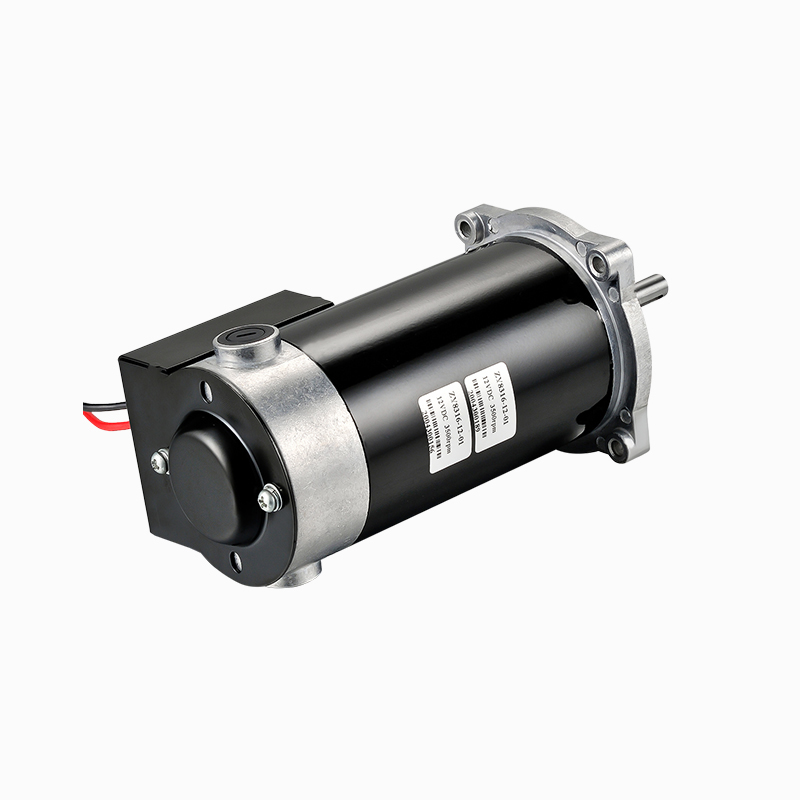Call us
+86-18023576732
+86-0579-89008006
Fax: +86-0579-82206899
Understanding the Nature of Electromagnetic Interference
Electromagnetic interference (EMI) refers to unwanted disturbances caused by electromagnetic radiation from external sources that can affect the performance of electronic devices and motors. In the case of a Permanent Magnet DC Motor, EMI can originate from nearby electronic systems, power lines, switching circuits, or even the motor’s commutation process. Depending on the design and operating environment, EMI can cause issues such as unstable operation, signal distortion, or reduced efficiency, especially in sensitive or precision applications.

Potential Sources of EMI in Motor Systems
In many systems using a Permanent Magnet DC Motor, sources of interference include high-frequency switching devices like pulse-width modulation (PWM) controllers, relays, and inverters. These components can generate high-frequency noise that may couple into the motor’s power supply lines or control circuitry. Additionally, if the motor is housed near radio-frequency (RF) emitters or powerful industrial equipment, it may become more vulnerable to interference, particularly if proper shielding or grounding is not implemented.
Internal Factors Contributing to EMI Sensitivity
The motor’s construction can influence its susceptibility to EMI. For instance, brushed versions of Permanent Magnet DC Motors inherently produce electromagnetic noise due to the arcing between brushes and the commutator during operation. This self-generated EMI can interfere with nearby electronics, sensors, or communication systems. While brushless variants mitigate this issue significantly, they can still produce EMI from high-speed switching in electronic controllers. Thus, even though the motor itself may not be a major receiver of EMI, it can be both a source and a victim of electromagnetic disturbances.
Impact of EMI on Performance and Reliability
When affected by electromagnetic interference, a Permanent Magnet DC Motor may experience erratic behavior such as fluctuating speed, unresponsive control signals, or signal errors in sensor feedback systems. In severe cases, EMI can corrupt control logic, trigger false alarms, or even cause operational shutdowns. This becomes particularly problematic in applications where precision and reliability are critical, such as in medical devices, laboratory equipment, or aerospace systems. Long-term exposure to high EMI levels may also degrade electronic components within the motor controller.
Mitigation Techniques and Design Solutions
To reduce susceptibility to EMI, several mitigation strategies can be applied. Shielded cables are commonly used for motor power and signal lines to prevent the ingress and egress of electromagnetic noise. Proper grounding practices ensure that stray currents are safely diverted away from sensitive components. Ferrite beads and filters can be installed on input and output lines to suppress high-frequency noise. In addition, using brushless motor designs with integrated EMI filtering further enhances resistance to interference, making the motor more robust in noisy environments.
Environmental Considerations and Application Suitability
The operating environment plays a major role in determining how prone a motor is to EMI. For example, a Permanent Magnet DC Motor installed in an industrial setting near welding equipment or high-power RF transmitters is far more likely to encounter interference than one operating in a controlled laboratory or office space. Engineers must evaluate the application context and include appropriate electromagnetic compatibility (EMC) measures during system design to ensure reliable performance across varying conditions.
Conclusion: EMI Is Manageable with Proper Design and Precautions
In conclusion, while a Permanent Magnet DC Motor can be affected by electromagnetic interference, especially in high-noise environments, its vulnerability can be significantly reduced through thoughtful design, proper shielding, and smart component selection. With modern techniques and adherence to EMC standards, these motors can operate reliably even in challenging applications where EMI is present. Therefore, understanding and addressing EMI risks is essential to improve motor performance and ensure system stability.
Contact Us